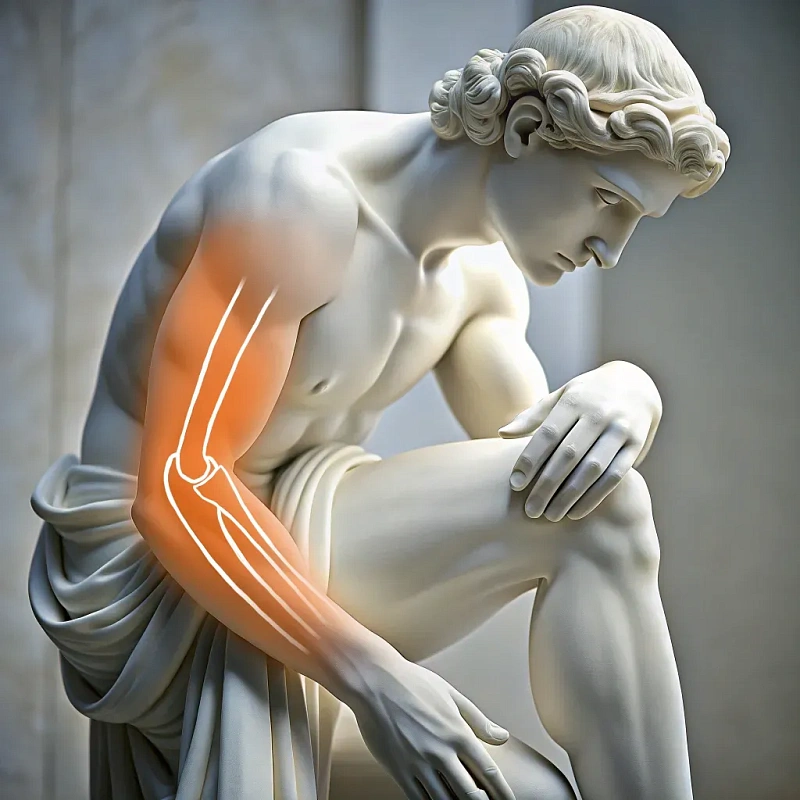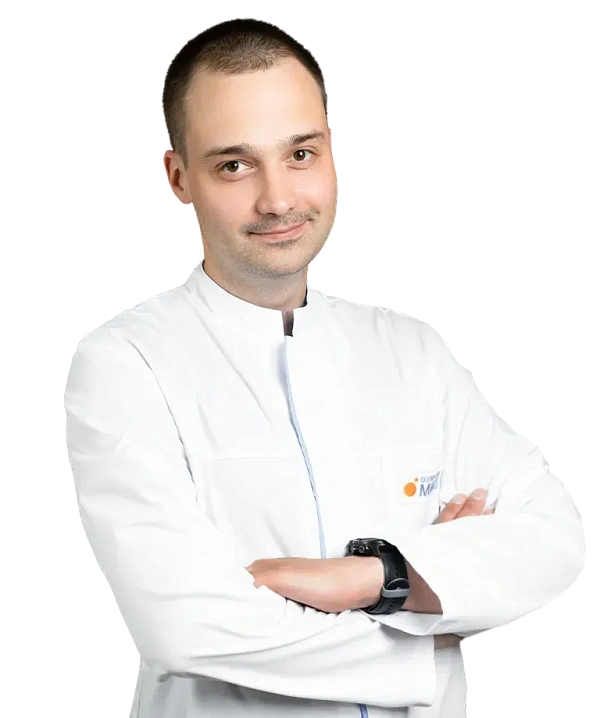Treatment of fractures of the radius
Radius fractures are among the most common limb injuries. They are most often caused by falling on an outstretched arm. Such fractures require timely treatment to restore the function of the upper limb.

Radius is one of the two main bones in the forearm that plays an essential role in arm and wrist mobility. Fractures can cause significant pain, swelling and loss of hand function.
Osteosynthesis accurately restores the anatomical structure and function of the bone, which is essential to prevent long-term complications and disability. Biocompatible fixation materials minimize the risk of rejection and other complications. The surgery is performed using minimally invasive techniques, which reduces trauma and accelerates the recovery process. Most patients can begin rehabilitation exercises in the first few days after surgery under the supervision of a specialized physician.
Common blood and urine tests. Coagulogram ( blood clotting assessment). Electrocardiogram (ECG). X-ray or computed tomography (CT) scan of the radius bone.
Plain fracture with no bone fragment displacement is treated nonsurgically. The arm is fixed for about a month and a half with a plaster cast or brace to ensure proper fusion of the bones. In cases of displaced bone fragments or complex fractures, it is necessary to undergo surgical intervention - osteosynthesis. The surgeon restores the anatomical structure of the bone and fixes the bone fragments with steel components such as plates, screws, pins or rods. The most complicated cases require external fixation devices to rehabilitate the arm.
X-ray equipment for intraoperative monitoring. Steel retainer set (plates, screws, pins). Instruments for preparing and installing retainers.
Bone fusion usually takes a month and a half; full recovery can take up to six months based on the age and characteristics of the patient. After the fraction has been treated, the patient is prescribed therapeutic exercises. After that, in order to restore the arm's range of motion, it is necessary to undergo a rehabilitation program prescribed by a rehabilitation physician. This program is selected individually and may include exercise therapy, physical therapy and massage.
Benefits
Anatomy restoration
Correct positioning of bone fragments ensures rapid and complete restoration of bone integrity.
Pain relief and mobility restoration
Patients can return to normal life and regular activities.
Preventing complications
Appropriate treatment helps avoid long-term consequences such as post-traumatic osteoarthritis or pain syndrome.
Frequently Asked Questions
How long does the surgery last?
When is it safe to start moving the arm after surgery?
How long does rehabilitation last?
Will the steel retainers be removed?
Didn't find an answer to your question?
You can describe your problem in detail and ask a question to the doctor. He will answer you and help you find a solution
Врачи
Смотреть всех врачейCandidate of Medical Sciences. Orthopedic Trauma Surgeon. Head of the Traumatology Department.
Candidate of Medical Sciences. Hand Surgeon, Orthopedic Trauma Surgeon, Microsurgeon. Head of the Hand and Microsurgery Center. Member of the Interregional Public Organization “Hand Surgery Society”.
Hand Surgeon, Orthopedic Trauma Surgeon, Plastic Surgeon, Microsurgeon. Senior Physician of the Hand and Microsurgery Center. Member of the Interregional Public Organization “Hand Surgery Society”.
Similar referral activities
Arthroscopy of the ankle joint
Ankle arthroscopy is a minimally invasive surgical procedure used to diagnose and treat various diseases and injuries of the ankle joint.
Arthroscopy of the knee joint
Knee arthroscopy is a minimally invasive surgical procedure for the diagnosis and treatment of injuries and diseases of the knee joint. It allows examining the joint for damage and eliminating the identified defects.
Arthroscopy of the elbow joint
Arthroscopy of the elbow joint is a minimally invasive surgical intervention that allows for accurate diagnosis and simultaneous treatment of joint injuries.
Arthrodesis of the joints of the fingers of the hand
The destruction of the joints of the fingers of the hand is accompanied by pronounced pain and impaired functions. Arthrodesis is a surgical intervention in which the affected joint is completely immobilized, which relieves pain and progression of inflammation.
Arthroscopic revision of the cystic joint
The condition of the wrist joints determines the functioning of the hand. Arthroscopic revision is a minimally invasive diagnostic procedure that assesses the condition of the joint tissues, which is necessary for planning subsequent treatment.
Arthroscopy of the shoulder joint
Arthroscopy of the shoulder joint is a minimally invasive surgical procedure designed to diagnose and treat various diseases and injuries of the shoulder joint.


